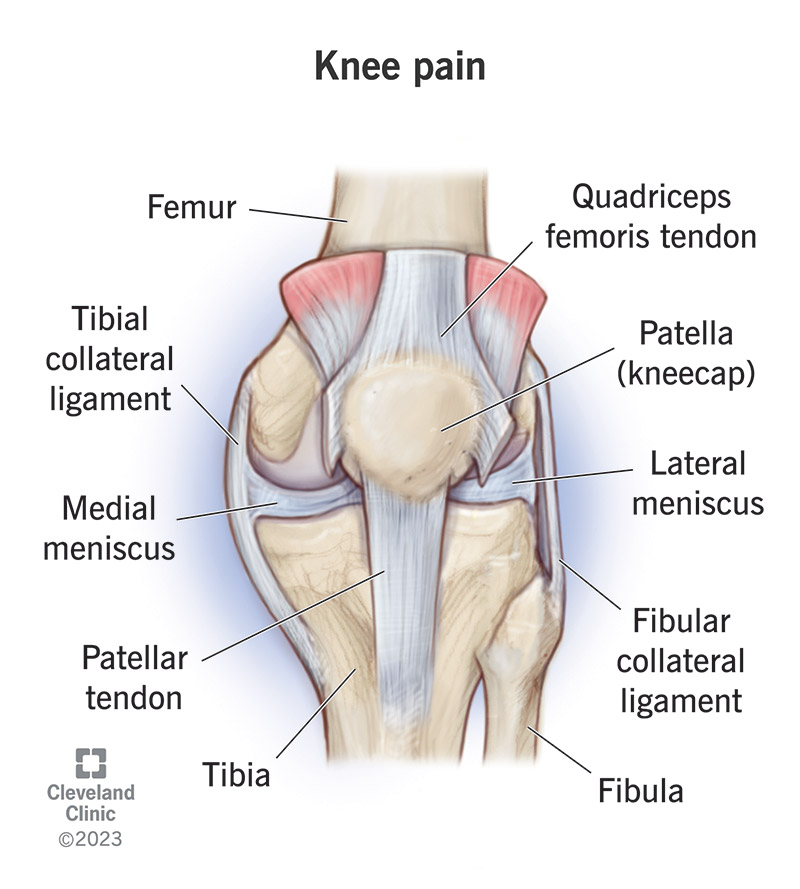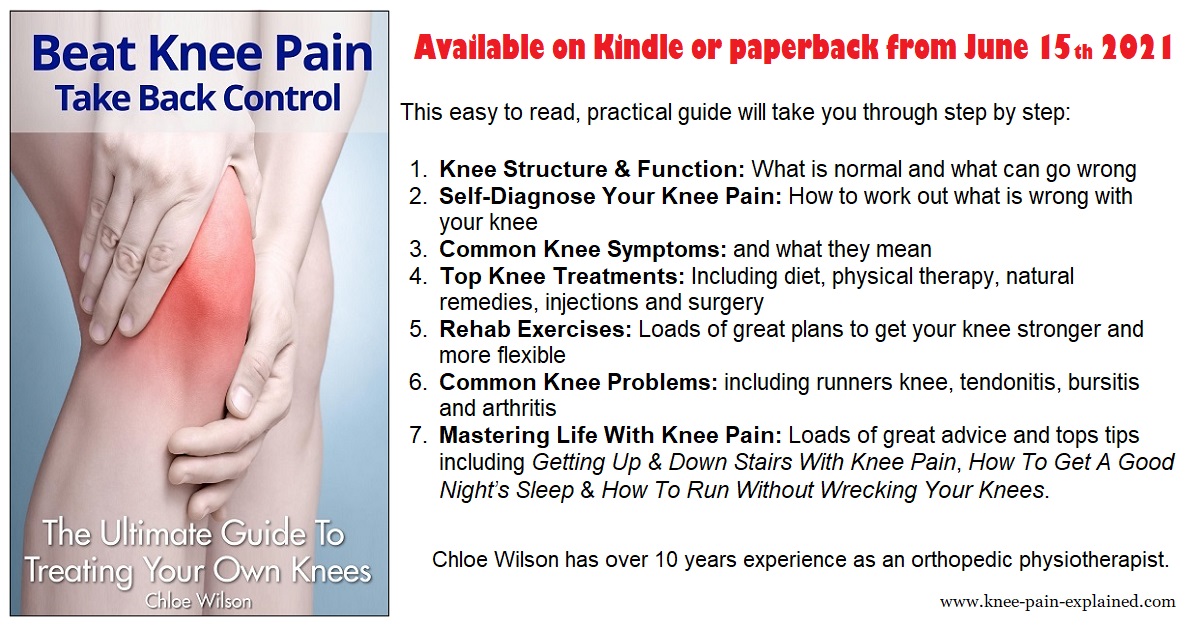Inner knee pain often stems from meniscus injuries or arthritis. Effective treatments include rest, ice, compression, and elevation (RICE).
Experiencing discomfort or pain in the inner part of the knee is a common issue that can disrupt daily activities. This pain, potentially sharp and debilitating, can arise from various causes, ranging from overuse injuries in athletes to degenerative conditions in older adults.
Identifying the source of the pain is crucial for finding appropriate treatment and relief. For individuals seeking to maintain an active lifestyle, understanding these causes and treatment options is essential. Knee pain shouldn’t be an obstacle in life’s journey, and with the proper care, individuals can regain their mobility and return to their favorite activities pain-free. With a focus on well-being and health, our guide aims to help you alleviate inner knee pain effectively.

Credit: www.bicycling.com
Causes Of Inner Knee Pain
Experiencing pain on the inner side of the knee is a common discomfort that many of us may encounter. Determining the true cause of the pain is crucial for effective treatment and quick recovery. Let’s dive into some of the primary causes and explore their corresponding treatments.
Knee Ligament Sprain
One common source of inner knee pain is a ligament sprain, specifically involving the medial collateral ligament (MCL). It’s typically the result of a force that pushes the knee sideways, common in sports or accidental falls.
- Rest the knee and avoid activities that cause pain.
- Apply ice to reduce swelling.
- Consider compression with a brace or bandage.
- Elevation can help minimize swelling.
Medial Meniscus Tear
Another cause is a tear in the medial meniscus, which is cartilage that absorbs shock in the knee joint. Tears often occur during twisting or pivoting movements.
- Resting and icing the knee can help initially.
- Physical therapy may be recommended to strengthen surrounding muscles.
- In some cases, surgery might be necessary to repair the tear.
Patellofemoral Pain Syndrome
Patellofemoral Pain Syndrome, also known as runner’s knee, arises from issues between the kneecap and the femur beneath it. This condition often surfaces in individuals with a high activity level.
- Modifying exercise routines can alleviate stress on the knee.
- Strengthening exercises improve muscular support for the knee joint.
- Knee braces or taping can offer additional support.

Credit: my.clevelandclinic.org
Overuse And Wear Related Causes
Overuse and wear often lead to inner knee pain. Activities that put constant stress on the knee can cause damage over time. Understanding how to treat this pain involves looking at specific conditions caused by overuse.
Osteoarthritis
Osteoarthritis is a common joint condition. It results from the knee’s cartilage wearing down over time. This cartilage lets the joint move smoothly. When it wears away, bones rub together, causing pain and stiffness.
- Reduce activity that strains the knee
- Use ice to lower inflammation
- Take over-the-counter pain relievers
- Consider physical therapy exercises
Bursitis
The knee has small sacs of fluid called bursae. These sacs cushion the joint. Overuse can inflame them, a condition known as bursitis.
| Symptom | Treatment |
|---|---|
| Swelling | Apply ice and rest the knee |
| Tenderness | Use anti-inflammatory medications |
| Pain with movement | Physical therapy or supportive devices |
Injury Related Causes
Inner knee pain often stems from injuries. Knee dislocations and fractures are among the most severe forms of injury. They require immediate attention and specific treatments. Let’s delve into how these injury-related causes contribute to inner knee pain and explore treatment options.
6. Knee Dislocation
A knee dislocation occurs when the bones are out of place. It can significantly affect the inner knee. Symptoms may include:
- Intense pain
- Visible deformity
- Swelling and bruising
Treatment often starts with a doctor realigning the bones. This is called reduction. After that, patients may need:
- Bracing or immobilization
- Physical therapy
- Surgery in severe cases
7. Fracture
A fracture in the knee area can cause sharp inner knee pain. This injury is serious and has symptoms such as:
| Symptom | Description |
|---|---|
| Sudden pain | Pain that starts quickly and is severe |
| Swelling | Knee becomes larger and feels tight |
| Difficulty moving | Hard to bend or straighten the knee |
To treat a fracture, doctors will:
- Perform X-rays to locate the break
- Use a cast or brace to keep the bones still
- Recommend surgery if the bones are not aligned
- Start physical therapy once the bone heals
Treatment Options
Inner knee pain might not only hinder movement but can signal an underlying issue needing prompt care. Understanding the treatment options is crucial for anyone looking to alleviate pain and restore knee function. Listed below are effective treatments, catering to varying severity of knee pain.
1. Rest And Ice
Tackling inner knee pain often starts with rest and ice. This approach aims to reduce inflammation and swelling. For best results, follow the ‘RICE’ protocol:
- Rest to prevent further injury.
- Ice the area for 20 minutes every two hours.
- Compress with an elastic bandage.
- Elevate the leg above heart level.
2. Physical Therapy
Physical therapy is crucial for strengthening the muscles around the knee. Tailored exercises enhance flexibility and stability. Qualified therapists guide through the recovery journey.
3. Medications
Over-the-counter medications ease pain and reduce inflammation effectively. Common options include:
- Ibuprofen.
- Acetaminophen.
- Aspirin.
4. Knee Injections
For persistent pain, knee injections may provide relief. Types include:
- Corticosteroids to lessen inflammation.
- Hyaluronic acid to lubricate joints.
- Platelet-rich plasma (PRP) to promote healing.
5. Surgery
Surgery might be necessary for severe cases. Options range from minimally invasive arthroscopy to more complex procedures. Consult an orthopedic surgeon for the best course of action.

Credit: www.knee-pain-explained.com
Frequently Asked Questions For 7 Common Causes Of Inner Knee Pain And How To Treat It
What Causes Inner Knee Pain?
Inner knee pain can result from meniscal injuries, ligament strains, arthritis, bursitis, tendinitis, or patellar malalignment.
Is Inner Knee Pain A Sign Of Arthritis?
Yes, osteoarthritis is one common cause of inner knee pain, especially in older adults due to wear-and-tear of the knee joint.
How Can I Alleviate Inner Knee Pain?
Rest, ice, compression, and elevation (RICE), along with anti-inflammatory medications, can alleviate inner knee pain; consult a doctor for a tailored treatment plan.
Can Exercises Help With Inner Knee Pain?
Yes, specific strengthening and stretching exercises can improve flexibility, boost muscle support, and reduce stress on the knee to help with pain.
What Is A Meniscal Injury?
A meniscal injury involves tears in the knee’s cartilage and is a frequent cause of inner knee pain particularly following twisting or overuse.
How Long Does Inner Knee Pain Last?
The duration of inner knee pain varies depending on its cause and treatment but may last several weeks or longer without proper care.
Can Inner Knee Pain Be Serious?
Persistent or severe inner knee pain can indicate a serious condition and should be evaluated by a healthcare professional for appropriate diagnosis and treatment.
Will Braces Support Inner Knee Pain?
Knee braces can offer support and stability for the inner knee, helping to alleviate pain, but effectiveness varies by individual and injury type.
Are There Surgical Options For Inner Knee Pain?
Surgical options, such as arthroscopy or joint replacement, may be considered for inner knee pain when conservative treatments fail to provide relief.
Do Anti-inflammatory Foods Impact Knee Pain?
Incorporating anti-inflammatory foods into your diet can help reduce overall inflammation and may provide some relief from knee pain.
Conclusion
Understanding the root causes of inner knee pain is your first step to recovery. Identifying your specific issue enables targeted treatment and faster relief. Consult with healthcare professionals for personalized care. Remember, timely intervention can prevent further damage to your knee.
Embrace a pain-free lifestyle through proper care and management.






Be First to Comment